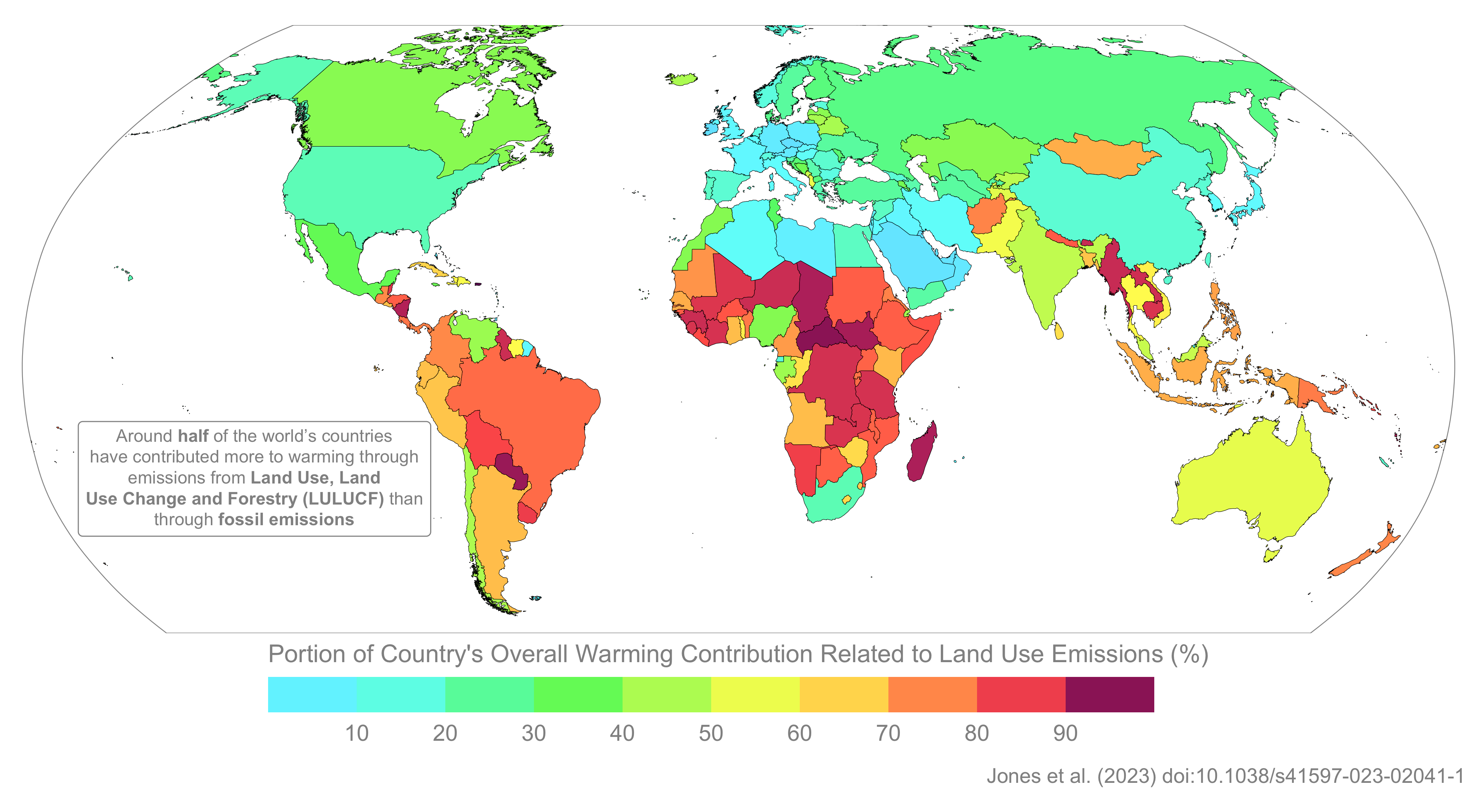National Contributions to Warming
Our collaborative research has generated a new database, revealing how countries have contributed to global warming through their emissions of key greenhouse gases since 1850.
The data provides a ‘ranking’ of countries that have contributed most to global warming, as well as insights into how they have changed in recent decades - for example, since 1992 when the United Nations Framework Convention on Climate Change (UNFCCC) was formed, representing a key milestone in international climate policy. This marks a new effort to track impacts in a critical decade for climate policy.
Challenge
Due to their long-lived and powerful effects on climate, the emissions of carbon dioxide (CO2), methane (CH4) and nitrous oxides (N2O) are regulated by the UNFCCC, with targets set for CO2 through nationally determined contributions (NDCs) under the Paris Agreement. Around 90% of NDCs include targets for CH4 and N2O.
Keeping track of the emissions of CO2, CH4 and N2O and the climatic responses is especially important for ensuring accountability with respect to NDCs.
Impact
The study seeks to inform the first Global Stocktake of the UNFCCC, the process set out in the Paris Agreement to assess national progress towards achieving the pact’s goal to limit global warming to 1.5°C. The findings were presented at COP28.
“This dataset will prove a critical tool for tracking the effect of changing national emissions on warming, for example as a result of climate policies implemented since the Paris Agreement. During the coming years, we hope to see warming contributions by all countries level off as commitments are met or surpassed.”
Dr Matt Jones
Insight
Dr Matt Jones led the study in which the team calculated the global mean surface temperature (GMST) response to emissions of CO2, CH4 and N2O gases that have made significant contributions to warming in the industrial era.
The database also provides estimates of national contributions to warming resulting from emissions of each gas, including those from fossil fuel and land use sectors.
The work, which involves members of team behind the Global Carbon Budget, builds on published records of historical emissions of CO2, CH4 and N2O from the pre-industrial period to 2021.

The analysis found the top contributors to warming up to 2021, through the emissions of all three gases since 1850, were: USA (0.28°C / 17.3% of warming induced by global emissions of all three GHGs); China (0.20°C / 12.3%); Russia (0.10°C / 6.1%); Brazil (0.08°C / 4.9%); India (0.08°C / 4.8%); Indonesia, Germany, UK, Japan, Canada (each contributing 0.03-0.05°C).

The research also highlights how the cause of national contributions can vary across countries at different stages of industrialisation. When considering all emissions since 1850, in half of the world’s countries, the land use and forestry sector still makes a dominant contribution to global warming.
Further ‘Key Insights’ from this study can be found under the ‘Discover More’ section below.
This dataset of national contributions, which is available via an online repository, is unique as it will be updated on a regular basis as new national figures become available.
Collaboration
This project, principally funded by the European Commission Horizon 2020 (H2020) VERIFY and published in the journal Scientific Data, brought together scientists from UEA, the Center for International Climate Research (CICERO) in Norway, the International Institute for Applied Systems Analysis (IIASA) in Austria, the Potsdam Institute for Climate Impact (PIK) and the Ludwig Maximilian University of Munich in Germany, the Woodwell Climate Research Center in the USA, and the University of Exeter in the UK.
Dr Matt Jones
Matt is a NERC Independent Research Fellow in the School of Environmental Sciences and a member of the Tyndall Centre for Climate Change Research and the Climatic Research Unit (CRU) here at UEA.
His research primarily focuses on the carbon cycle and climate change, with a particular interest in understanding the factors that control wildfire and other landscape fires, and the consequences of fire for carbon storage on land and in aquatic environments. Matt’s involvement with the Global Carbon Project allows him to explore wider interests in how humans affect the carbon cycle and climate through our use of fossil fuel and land use change.
Discover More
)
Explore
more...National contributions to climate change due to historical emissions of carbon dioxide, methane, and nitrous oxide since 1850.
)
)

)